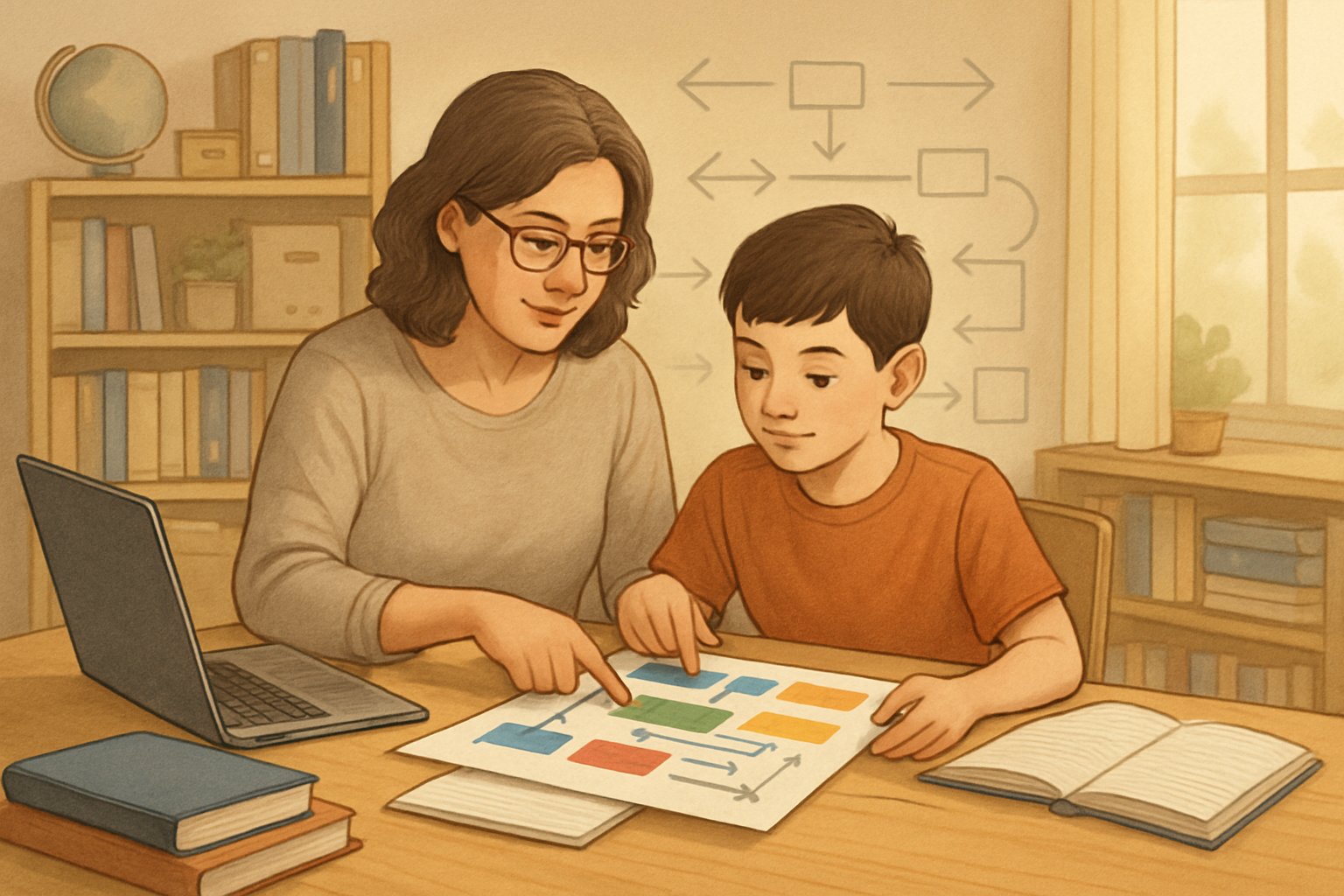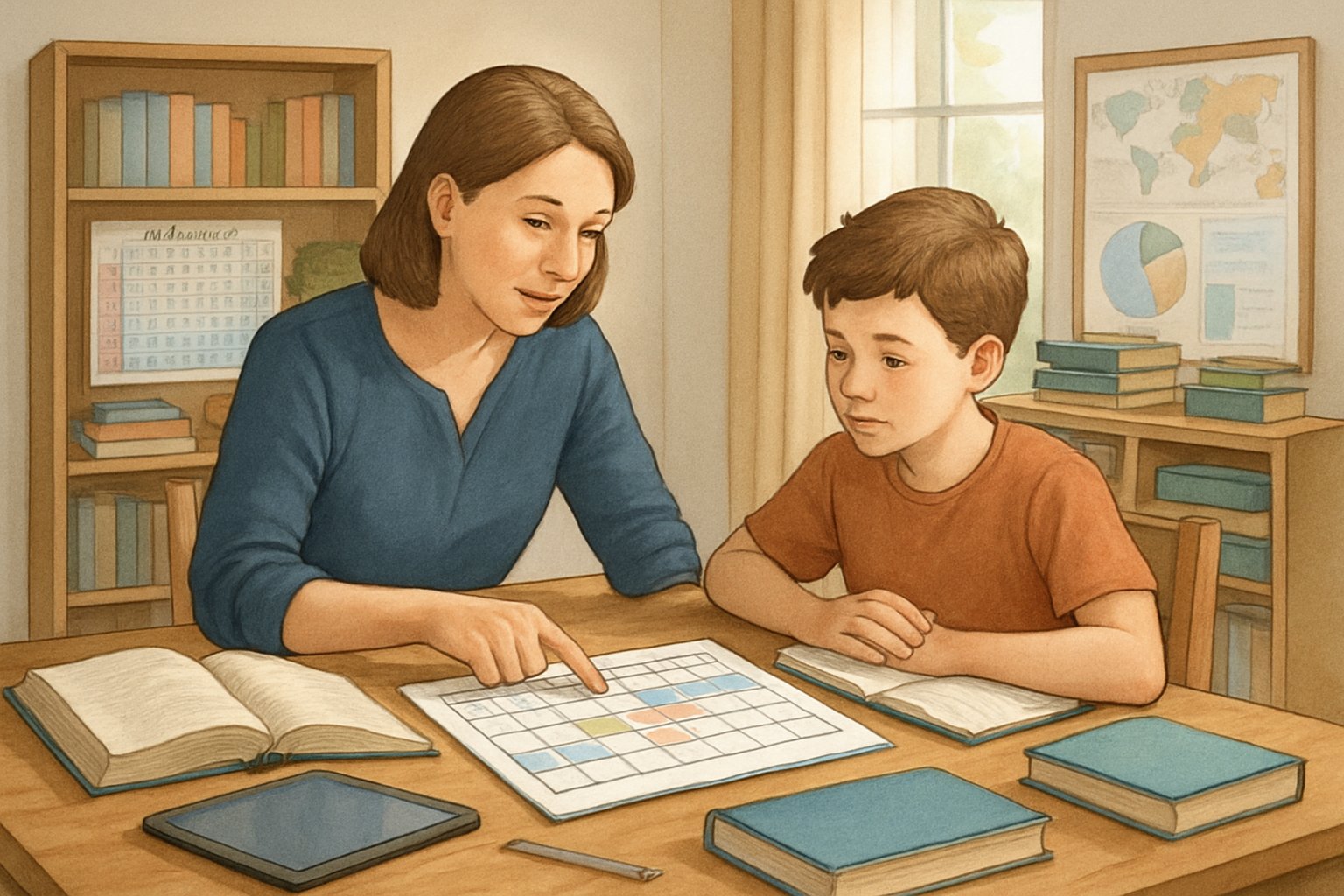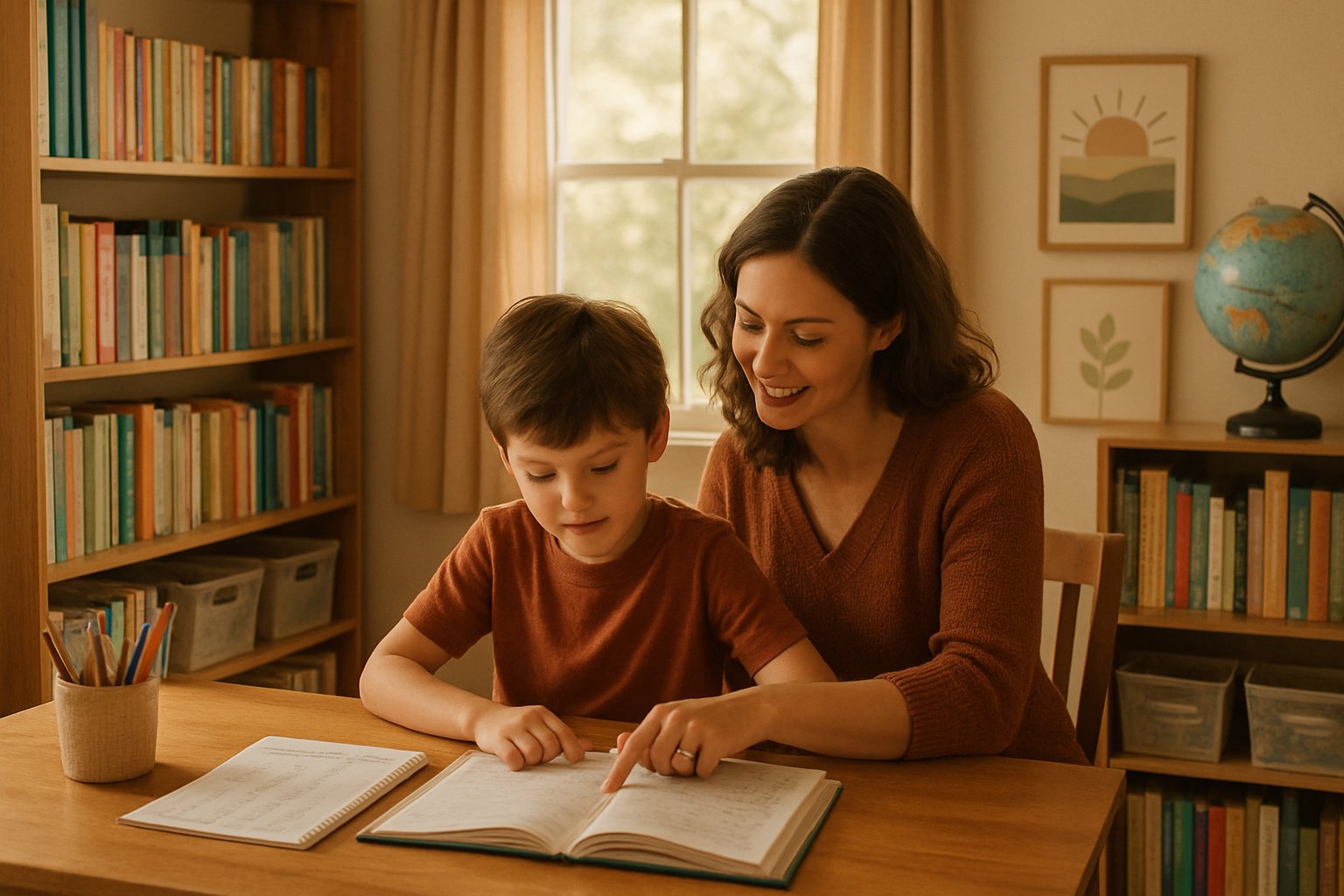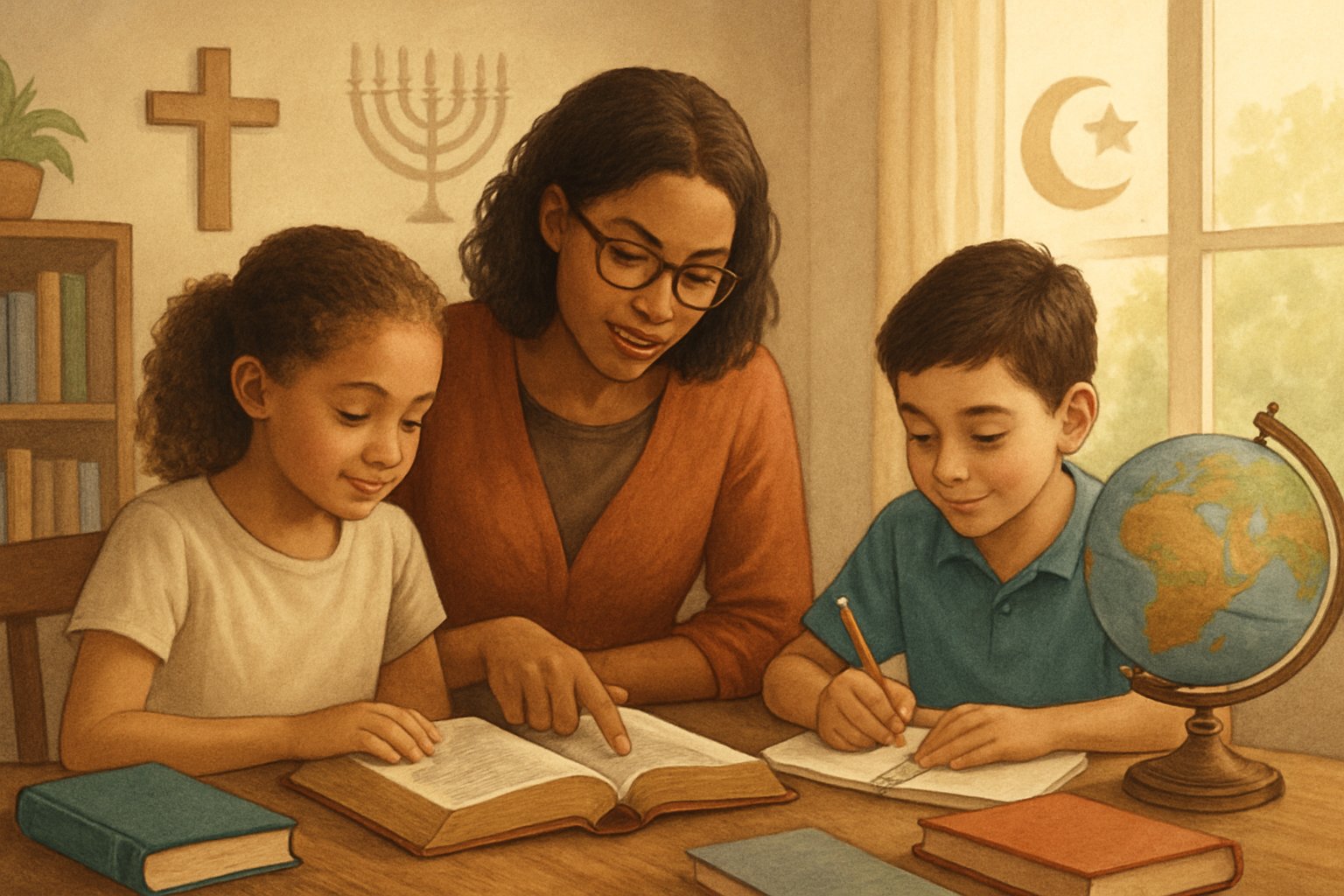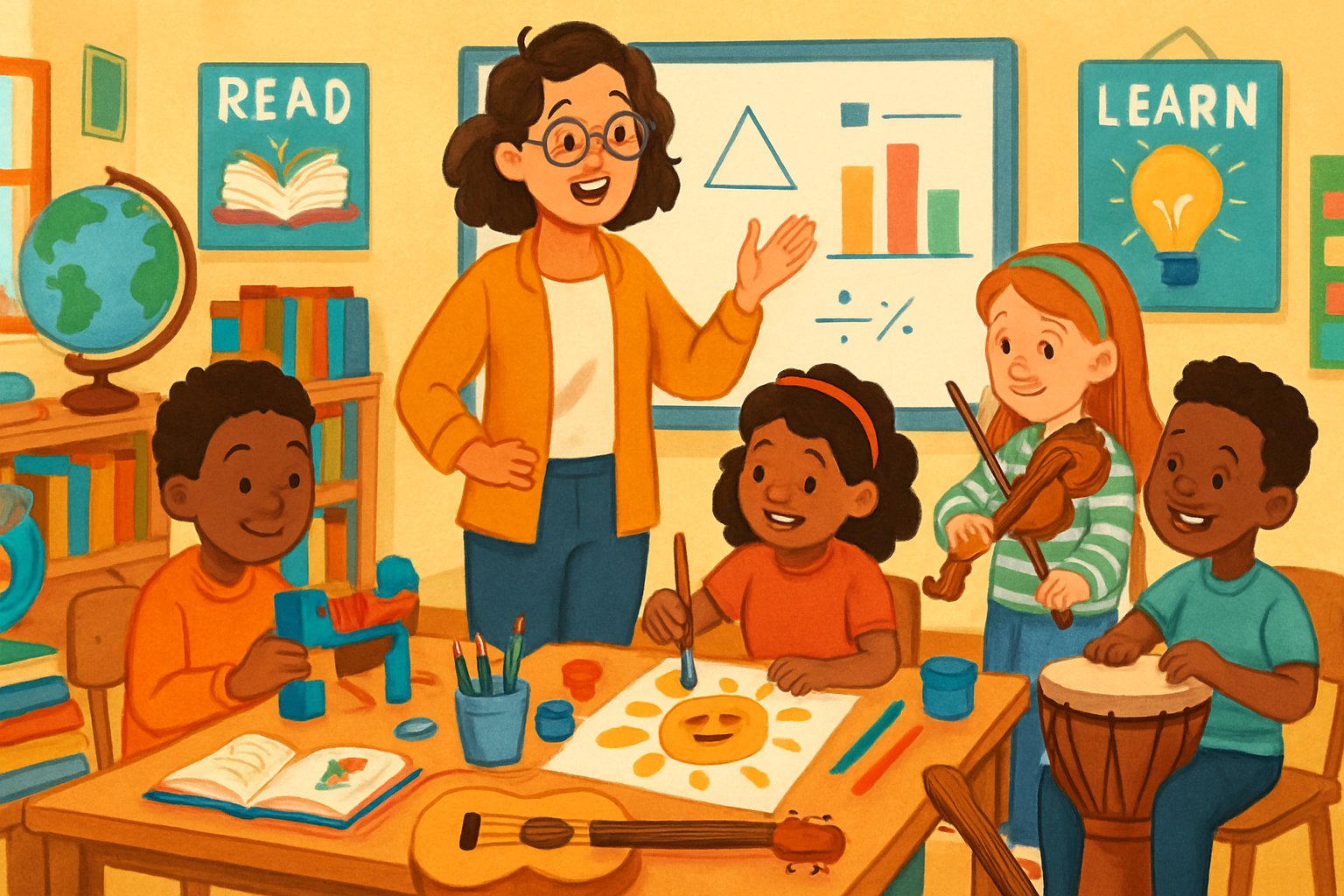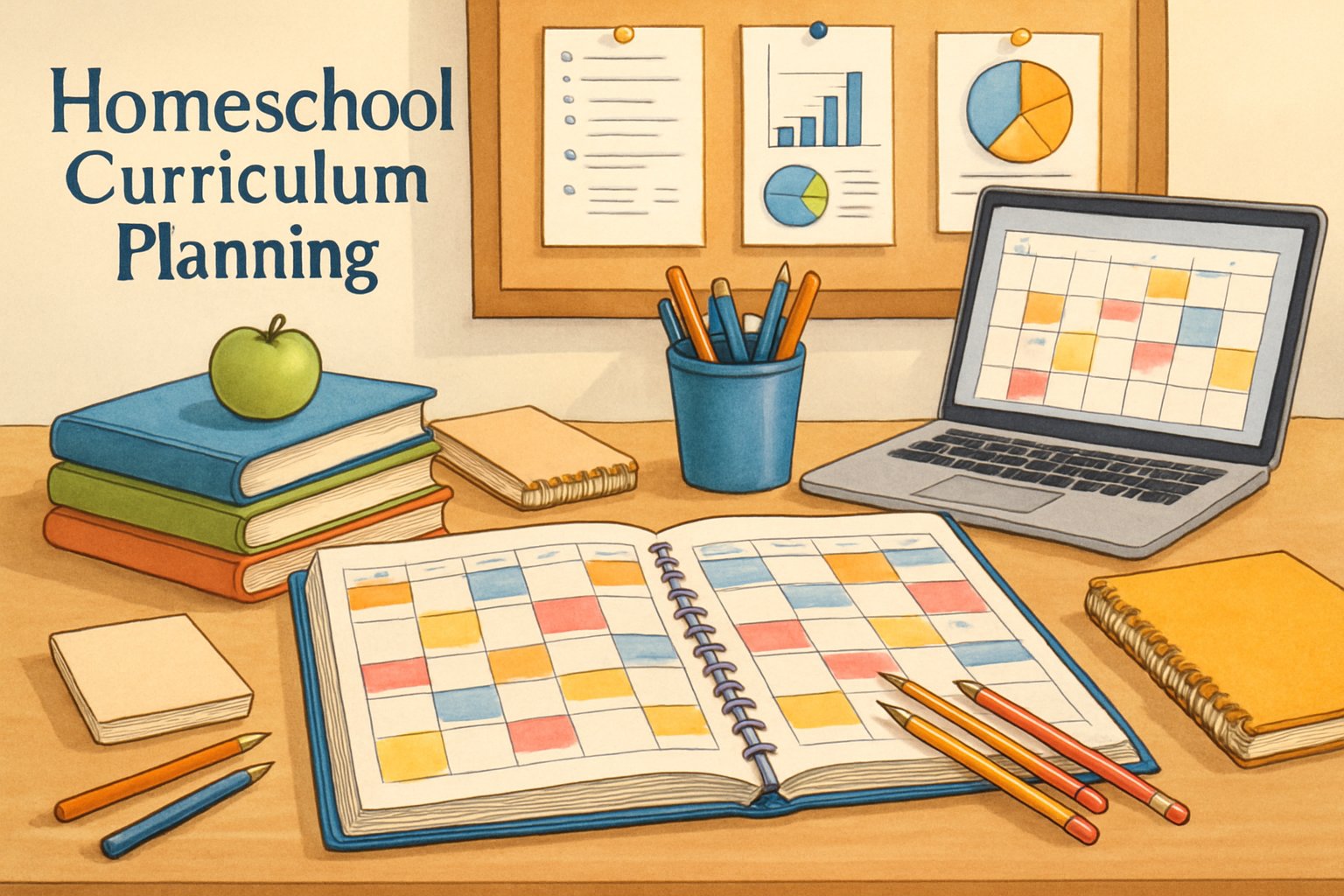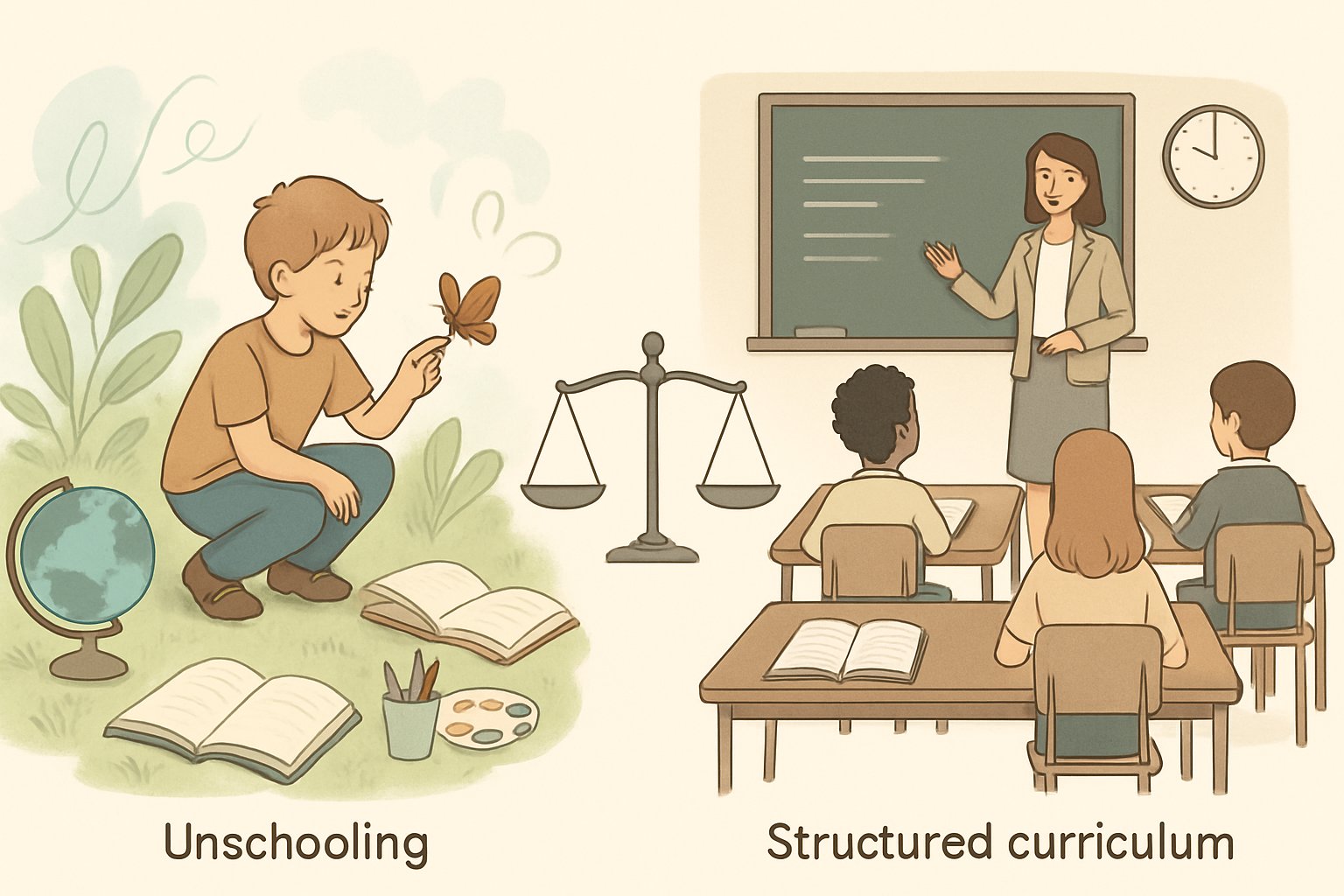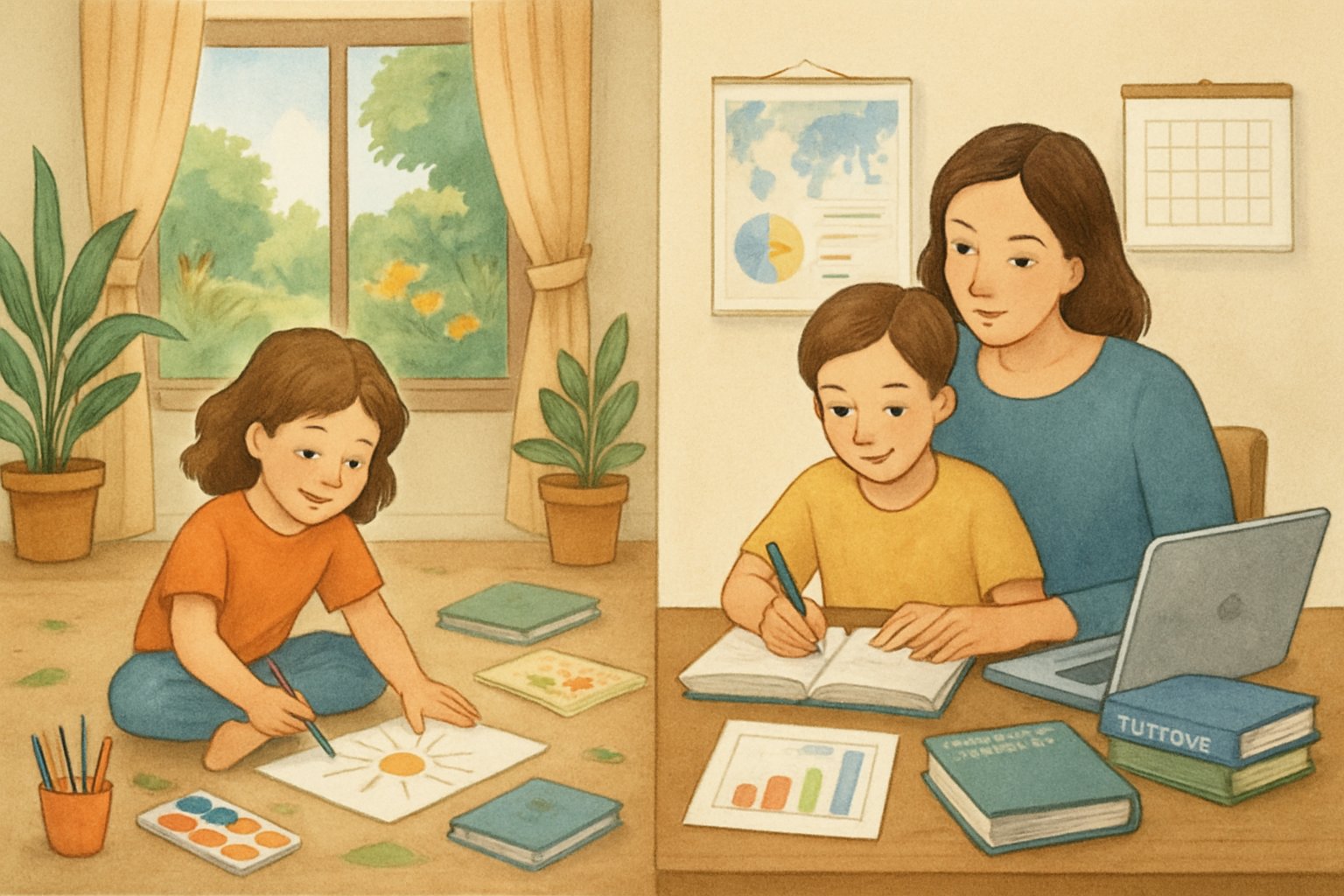What Are Unit Studies in Homeschooling?

Unit studies help students explore one central topic through many academic subjects, creating stronger connections and deeper understanding. This flexible homeschooling method blends reading, writing, math, science, and art into a single theme, allowing children to learn in an integrated, engaging way.
Defining Unit Studies and Thematic Units
A unit study (sometimes called a thematic unit) focuses on one topic across multiple subjects instead of using separate textbooks for each. For example, a lesson on the solar system may include reading astronomy books, calculating planetary distances, and writing a report about space exploration.
This approach encourages integrated learning, helping children see how information fits together rather than treating each subject as an island. A homeschool unit study can cover a short-term theme like “seasons” or a yearlong topic like “world history.”
Unit studies are often interest-based, making them adaptable to each student’s curiosity and pace. Whether parents create their own or use a preplanned unit study curriculum, this homeschooling method supports creativity and critical thinking.
How Unit Studies Integrate Multiple Subjects
Unit studies naturally connect core subjects through a shared focus. For instance, a theme on oceans might include:
| Subject | Example Activity |
|---|---|
| Science | Explore marine ecosystems |
| Math | Measure and graph ocean depths |
| Language Arts | Write essays on sea animals |
| Art | Paint coral reefs |
| Geography | Label world oceans on a map |
By blending disciplines, students learn how different fields relate to one another. According to ABCmouse’s explanation of homeschool unit studies, this method supports long-term understanding because it links learning with real-world contexts.
This structure benefits both independent learners and families teaching children of different ages. Each student can explore the same topic at their own level while staying connected through shared discussions and projects.
Reasons to Choose Unit Studies as a Homeschool Curriculum
Many families choose the unit study approach for its flexibility and practical learning style. It allows them to adapt lessons to daily life, field trips, or seasonal interests while still meeting academic goals.
A homeschool unit study curriculum supports hands-on exploration and fosters a sense of curiosity by turning everyday experiences into educational moments. Students often retain information better because they actively engage with the material rather than just memorizing facts.
Unit studies also simplify planning for parents. Rather than juggling multiple books and schedules, one theme covers everything from science to art.
This approach creates a more connected homeschool environment and keeps learning both purposeful and enjoyable.
How to Get Started with Unit Studies

Families can begin homeschooling with unit studies by picking subjects that match their children’s interests, gathering useful resources, and creating a learning plan that encourages curiosity. By mixing reading, creative projects, and hands-on experiences, parents can make lessons both structured and flexible.
Selecting Topics and Setting Learning Goals
A successful unit study starts with choosing a meaningful topic. Parents can pick themes connected to their children’s curiosity—such as weather, space, animals, or history.
Following a child’s interests helps them stay motivated, as noted in Homeschool Unboxed’s guide to planning a unit study.
When setting goals, focus on what each child should understand or be able to do by the end of the study. Goals can include identifying key facts, applying a concept, or completing a project.
A unit study planner can help define objectives for reading, writing, science, and art. Short-term and long-term goals make it easier to track progress.
For example, in a plants and gardening unit, short-term goals may include labeling plant parts, while long-term goals might involve growing herbs and recording observations.
Gathering Books, Resources, and Living Books
Once a topic is chosen, families can collect quality materials to bring the subject to life. Using living books—narrative-style texts that spark imagination—creates stronger connections to the material.
Resources such as libraries, online archives, and websites like Homeschool Think Tank offer guidance on how reading choices fit into a unit study. Parents can combine fiction, nonfiction, and reference books with multimedia tools like documentaries and virtual tours.
For example:
| Resource Type | Examples |
|---|---|
| Books | Classic stories, biographies, atlases |
| Online materials | Interactive websites, maps, videos |
| Printables | Worksheets, notebooking pages, templates |
Using a blend of print and digital materials supports different learning styles—visual learners benefit from charts and videos, while auditory learners absorb information from audiobooks and podcasts.
Integrating Hands-On Activities and Arts and Crafts
Adding hands-on activities turns lessons into experiences. Building models, cooking, gardening, or completing simple science experiments makes concepts easier to understand.
According to Seasonal Homeschooling, these projects help children connect subjects naturally and remember them longer.
Arts and crafts also deepen understanding. Painting, clay modeling, and collage work allow children to express what they’ve learned creatively.
For instance, during a weather unit, they might build a rain gauge or paint storm clouds. Parents can keep materials organized in labeled bins for quick setup.
Quick, low-mess options like paper crafts or coloring pages are also useful for younger learners or busy days.
Scheduling and Organizing Your Unit Study
Once materials are ready, planning the schedule helps maintain balance. Some families use a unit study planner to outline subjects and timelines.
Others prefer flexible weekly goals. As explained in Blessed Homeschool’s tips for creating a unit study, intentional scheduling gives structure while allowing exploration.
Families can create a simple chart showing daily focus areas:
| Day | Focus | Example Activity |
|---|---|---|
| Monday | Reading | Biography or storybook |
| Tuesday | Science | Simple experiment |
| Wednesday | Writing | Journal entry |
| Thursday | Art | Craft or project |
| Friday | Review | Discussion or presentation |
A consistent but flexible routine ensures activities stay on track while leaving room for spontaneous learning moments. Tracking progress with notes or student portfolios helps families evaluate what worked best for future studies.
Making Unit Studies Engaging and Effective

Engaging unit studies work best when learning feels connected to real life, involves multiple senses, and adapts to different ages and abilities. Families can make lessons stick by mixing hands-on learning, creative assessments, and practical experiences outside the home.
Incorporating Field Trips and Real-World Experiences
A well-planned field trip turns a topic into a meaningful adventure. Visiting museums, farms, or local businesses helps students see how lessons apply to the real world.
For example, a homeschool science unit on ecosystems comes alive with a walk through a nature preserve. Parents can schedule short, focused trips that match the current theme.
A weather unit could include a visit to a meteorology center, while a history study might feature a reenactment site. Even simple outings—like stargazing for astronomy—spark curiosity and long-term memory.
For families who prefer learning from home, virtual tours offer great options. The Homeschool Unboxed guide suggests online museum tours or local nature walks as affordable alternatives to larger trips.
These experiences build excitement and help connect different subject areas naturally.
Using Lapbooks and Creative Assessment Methods
Lapbooks turn learning into a visual story students can hold and review anytime. Each flap, pocket, and mini-book captures facts, vocabulary, or artwork related to the unit.
Younger children enjoy decorating their lapbooks, while older students can use them to organize research from free unit studies. Creative assessments replace formal tests with flexible activities that reveal understanding in fun ways.
Children might present a short skit, design a poster, or demonstrate an experiment. These options encourage self-expression and reduce stress while showing what they remember and enjoy most about a topic.
Families can find step-by-step planning help from resources like Homeschool Freebies and Giveaways. The site explains how to combine notebooking, art projects, and conversations to document progress meaningfully.
Customizing for Different Ages and Learning Needs
Flexible unit studies make it easy to teach multiple ages together. Younger students might color diagrams or sort pictures, while older ones write summaries or build detailed models.
Grouping children by age for certain tasks lets everyone stay challenged without frustration.
Adapting lessons for different learning styles matters too. Auditory learners benefit from read-alouds and discussion.
Visual learners thrive with charts and timelines. Kinesthetic learners need hands-on learning such as experiments or crafts.
When parents design activities around interests and abilities, children stay engaged longer. Small adjustments—like simplifying reading materials or expanding independent projects—help every child succeed within the same topic.
